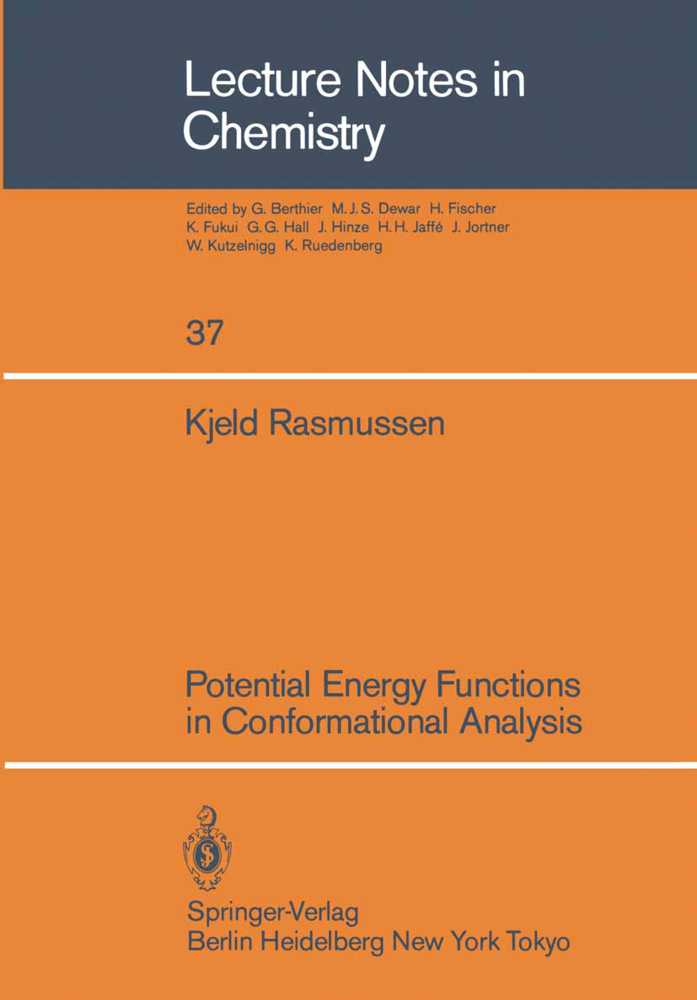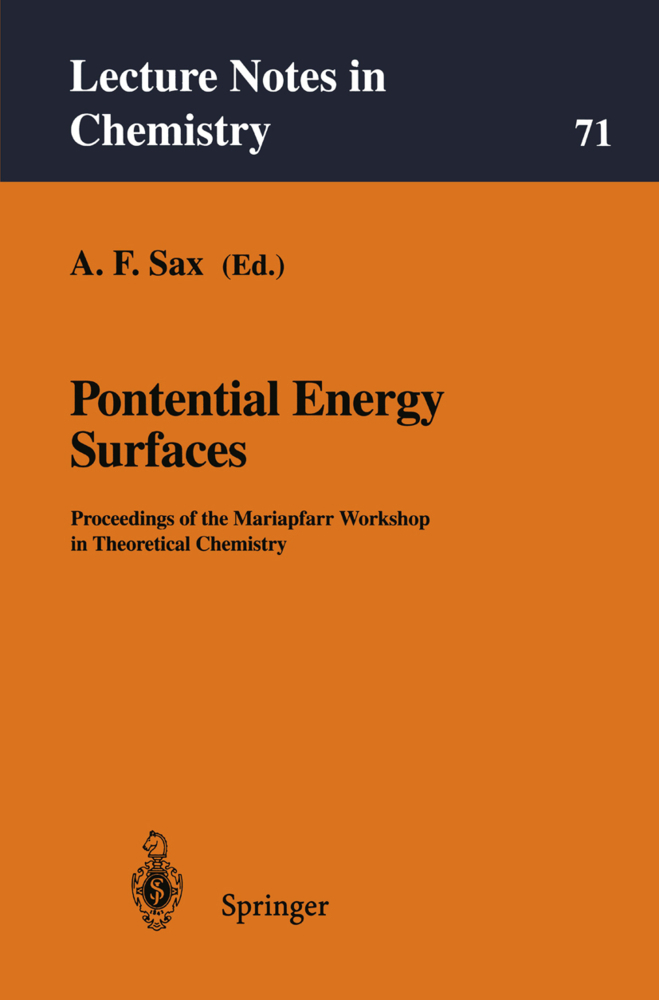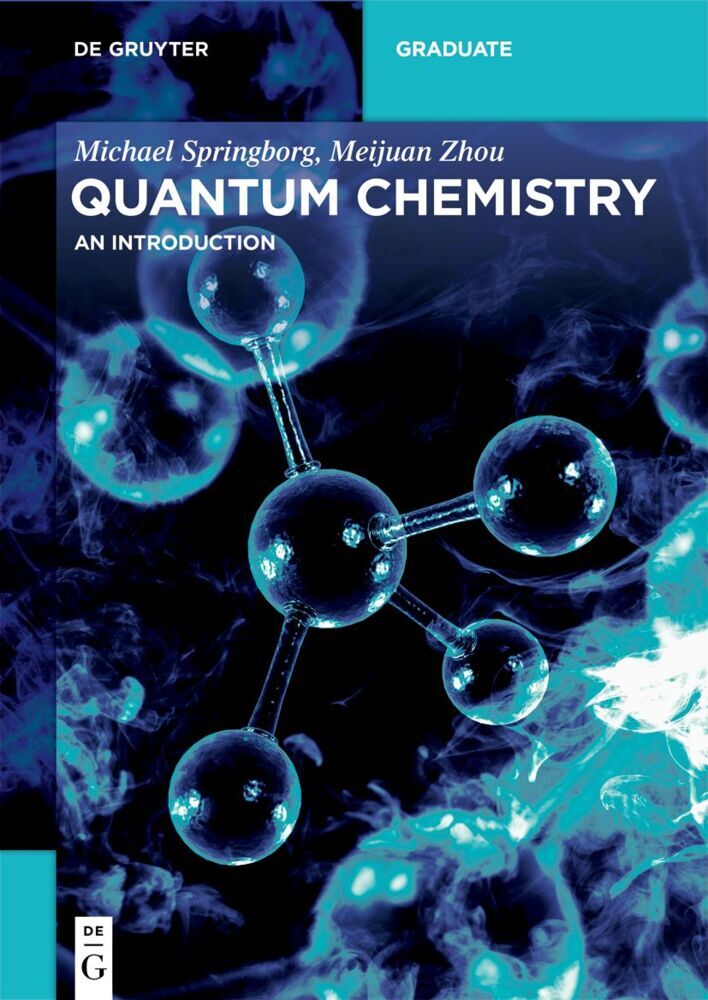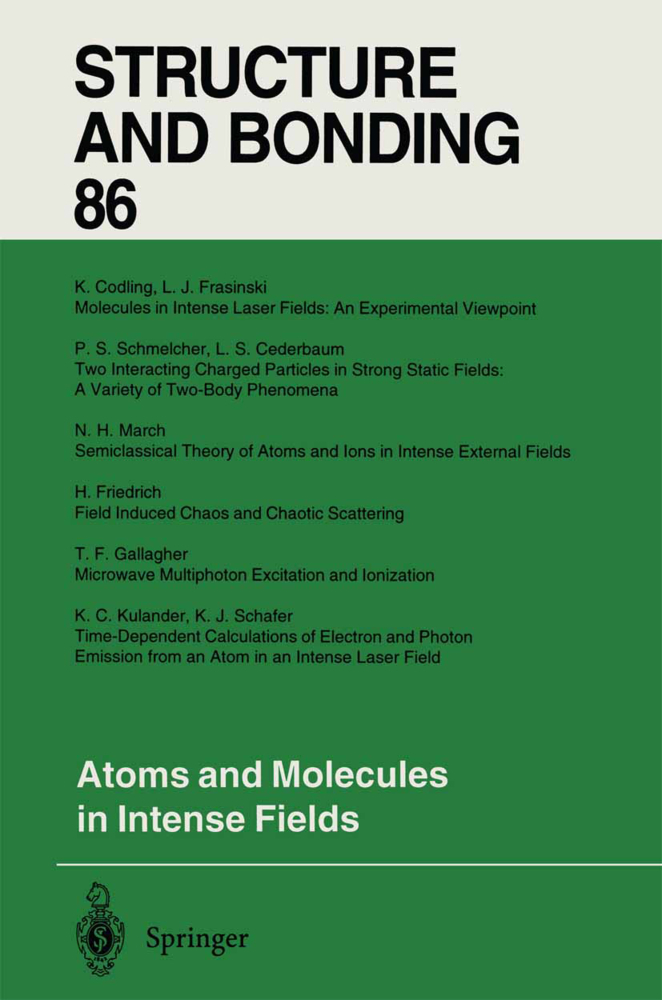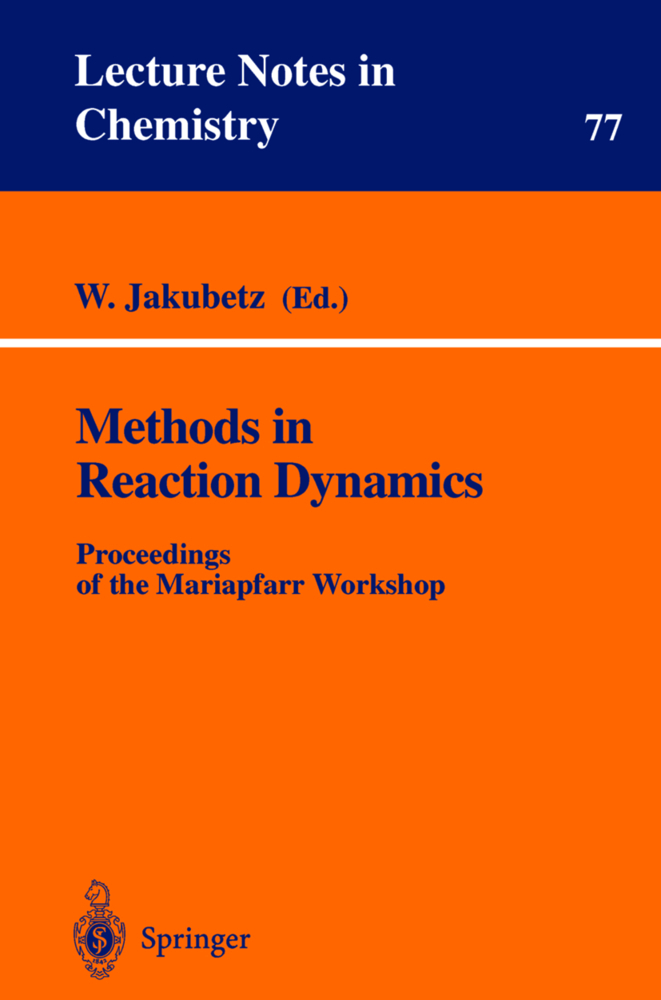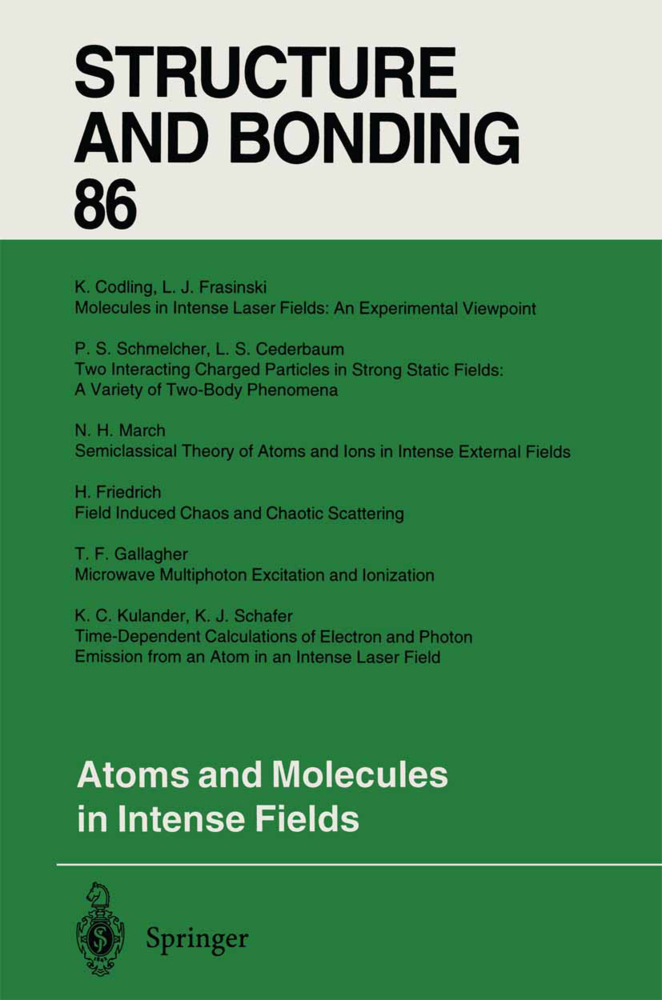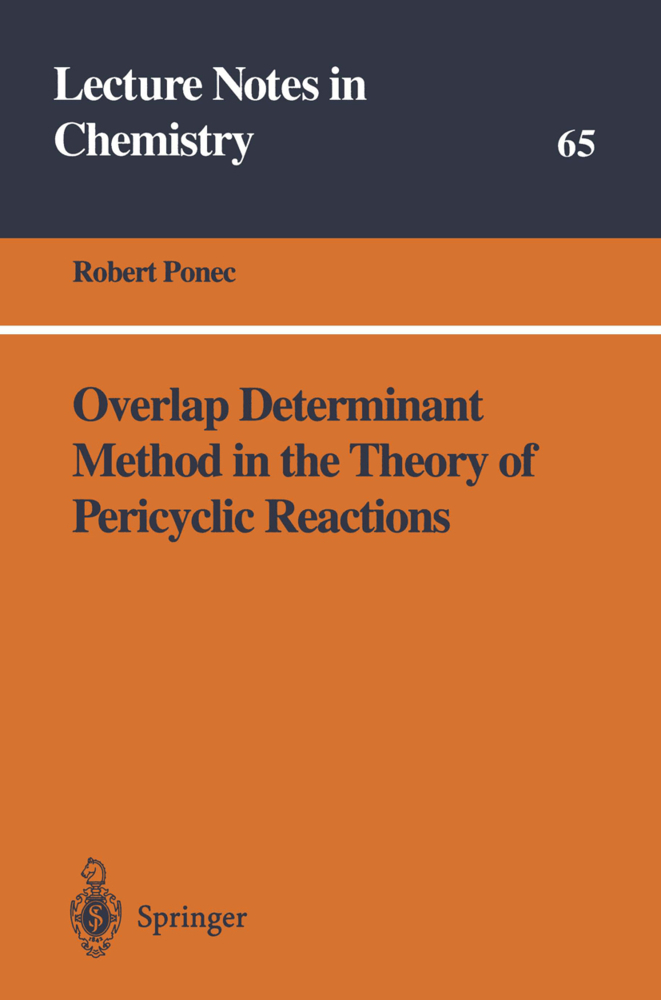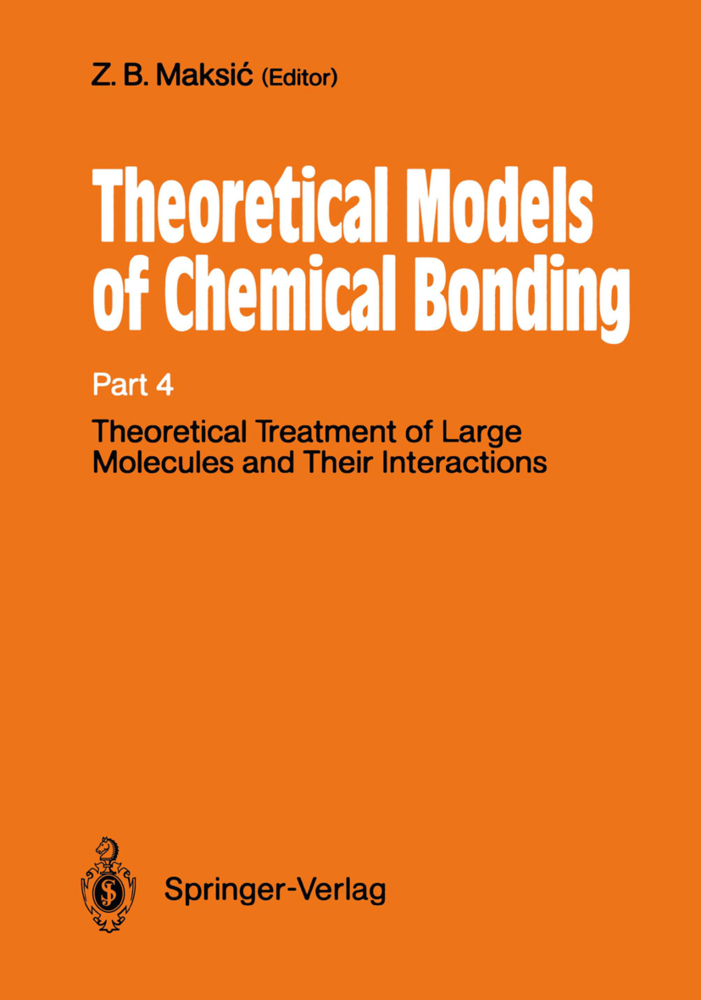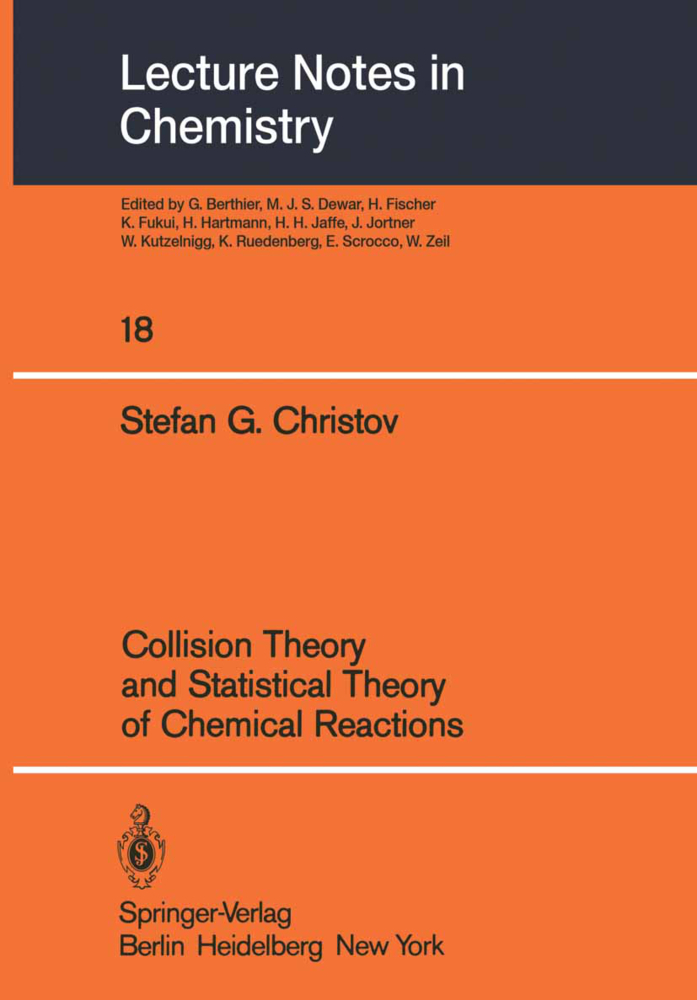Potential Energy Functions in Conformational Analysis
Potential Energy Functions in Conformational Analysis
I get by with a little help from my friends The Beatles: Sgt. Pepper This book should have been in Danish. Any decent person must be able to express himself in his mother's tongue, also when expounding scientific ideas and results. Had I stuck to this ideal, the book would have been read by very few people, and, indeed, appreciated by even fewer. Having it publ ished in English gives me a chance to fulfill one ambition: to be read and judged by the international scientific community. Another reason is that the majority of my professional friends are regrettably unread in Danish, just as I am in Hebrew, Finnish and even Italian. I want to deprive them of the most obvious excuse for not reading my opus. Like a man I admired, I will first of all thank my wife. In his autobiography, Meir Weisgal, then President of the Weizmann Insti tute of SCience, wrote about his wife: "In addition to her natural endowments - which are considerable - she was a more than competent part-tim~ secretary." He wrote on, and so shall I. The book has been edited by my wife. So if the reader finds the layout pleasant as, in actual fact, I myself do, Birgit is to be praised. If there are blemishes, I am to be blamed for not having caught them.
2.1 Crucial expressions
2.2 Structure
2.3 Potential energy function
2.4 Molecular mechanics
3 Potential energy functions: A review
3.1 Scope
3.2 Plan
3.3 Historical background
3.4 CFF and variants
3.5 Karplus
3.6 Kollman
3.7 Schleyer
3.8 Mislow
3.9 Bartell
3.10 Boyd and variants
3.11 Altona and Faber
3.12 The Delft group
3.13 White
3.14 Kitaigorodsky
3.15 Allinger
3.16 Osawa
3.17 Scheraga
3.18 Ab initio modelling of non-bonded interactions
4 Applications: Coordination complexes
4.1 An early consistent force field
4.2 Australian and American groups
4.3 The Lyngby group
4.4 Other groups
5 Applications: Saccharides
5.1 The glucoses
5.2 Maltose
5.3 Cellobiose
5.4 Gentiobiose
5.5 Galactobiose
5.6 Misunderstandings
6 Applications: Other compounds
6.1 Amines
6.2 Polynucleotides
6.3 Spiro compounds
6.4 Chloroalkanes
7 Optimisation: Algorithms and implementation
7.1 The optimisation algorithm
7.2 Termination criteria
7.3 The partial derivatives
7.4 Correlation and uncertainty
7.5 Organisation of the optimisation
8 A data bank for optimisation
8.1 Structure
8.2 Vibrational frequency
8.3 Fractional atomic charge
8.4 Dipole moment
8.5 Rotational constants
8.6 Unit cell dimensions
8.7 Statistical test
8.8 Use of the data
9 Potential energy functions: Optimisations
9.1 PEF300 series
9.2 PEF400 series
9.3 Comparisons
10 Applications: Alkanes and cycloalkanes
10.1 Non-optimised potential energy functions
10.2 Optimised potential energy functions
10.3 Reliability
11 Extension to crystals
11.1 Methods
11.2 Implementation
11.3 Test calculations.
11.4 Optimisation on crystals
11.5 Implementation
11.6 Test calculations.-12 Potential energy functions: Recommendations
12.1 General guidelines
12.2 Packages
12.3 Parameter sets
A1 Availability of the Lyngby CFF program
A2 User Manual
A2.1 Summary of the JCL for CFF under IBM MVS
A2.2 Input to the conformational program
A2.3 An example: cyclohexane
A2.4 A second example: the ethane crystal
A3 The system of programs
A3.1 The CFF system
A3.2 Interfaces
A3.3 Utilities
A4 JCL procedure CFF
A5 TSO command list CFF
A6 The future of CFF
Literature references
Index of names.
1 Introduction
2 Nomenclature2.1 Crucial expressions
2.2 Structure
2.3 Potential energy function
2.4 Molecular mechanics
3 Potential energy functions: A review
3.1 Scope
3.2 Plan
3.3 Historical background
3.4 CFF and variants
3.5 Karplus
3.6 Kollman
3.7 Schleyer
3.8 Mislow
3.9 Bartell
3.10 Boyd and variants
3.11 Altona and Faber
3.12 The Delft group
3.13 White
3.14 Kitaigorodsky
3.15 Allinger
3.16 Osawa
3.17 Scheraga
3.18 Ab initio modelling of non-bonded interactions
4 Applications: Coordination complexes
4.1 An early consistent force field
4.2 Australian and American groups
4.3 The Lyngby group
4.4 Other groups
5 Applications: Saccharides
5.1 The glucoses
5.2 Maltose
5.3 Cellobiose
5.4 Gentiobiose
5.5 Galactobiose
5.6 Misunderstandings
6 Applications: Other compounds
6.1 Amines
6.2 Polynucleotides
6.3 Spiro compounds
6.4 Chloroalkanes
7 Optimisation: Algorithms and implementation
7.1 The optimisation algorithm
7.2 Termination criteria
7.3 The partial derivatives
7.4 Correlation and uncertainty
7.5 Organisation of the optimisation
8 A data bank for optimisation
8.1 Structure
8.2 Vibrational frequency
8.3 Fractional atomic charge
8.4 Dipole moment
8.5 Rotational constants
8.6 Unit cell dimensions
8.7 Statistical test
8.8 Use of the data
9 Potential energy functions: Optimisations
9.1 PEF300 series
9.2 PEF400 series
9.3 Comparisons
10 Applications: Alkanes and cycloalkanes
10.1 Non-optimised potential energy functions
10.2 Optimised potential energy functions
10.3 Reliability
11 Extension to crystals
11.1 Methods
11.2 Implementation
11.3 Test calculations.
11.4 Optimisation on crystals
11.5 Implementation
11.6 Test calculations.-12 Potential energy functions: Recommendations
12.1 General guidelines
12.2 Packages
12.3 Parameter sets
A1 Availability of the Lyngby CFF program
A2 User Manual
A2.1 Summary of the JCL for CFF under IBM MVS
A2.2 Input to the conformational program
A2.3 An example: cyclohexane
A2.4 A second example: the ethane crystal
A3 The system of programs
A3.1 The CFF system
A3.2 Interfaces
A3.3 Utilities
A4 JCL procedure CFF
A5 TSO command list CFF
A6 The future of CFF
Literature references
Index of names.
Rasmussen, Kjeld
| ISBN | 978-3-540-13906-5 |
|---|---|
| Medientyp | Buch |
| Copyrightjahr | 1985 |
| Verlag | Springer, Berlin |
| Umfang | XIV, 240 Seiten |
| Sprache | Englisch |

